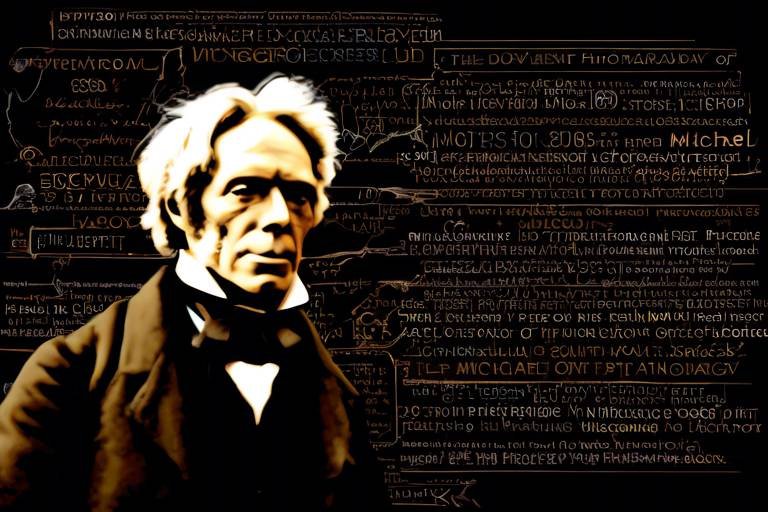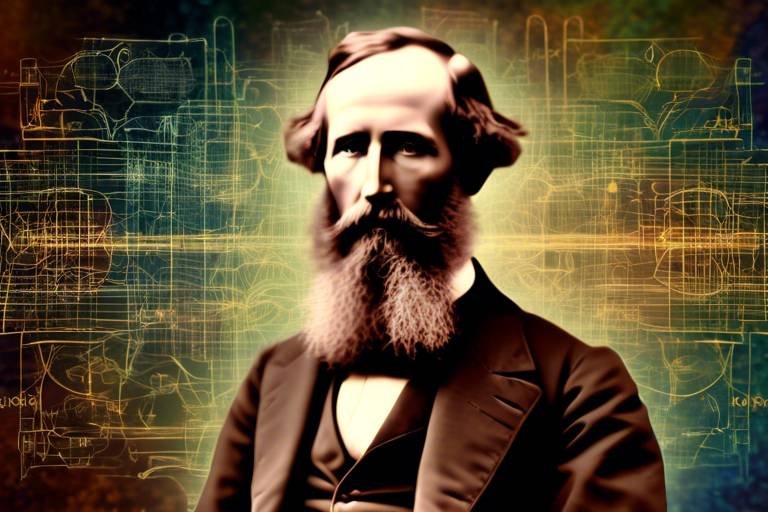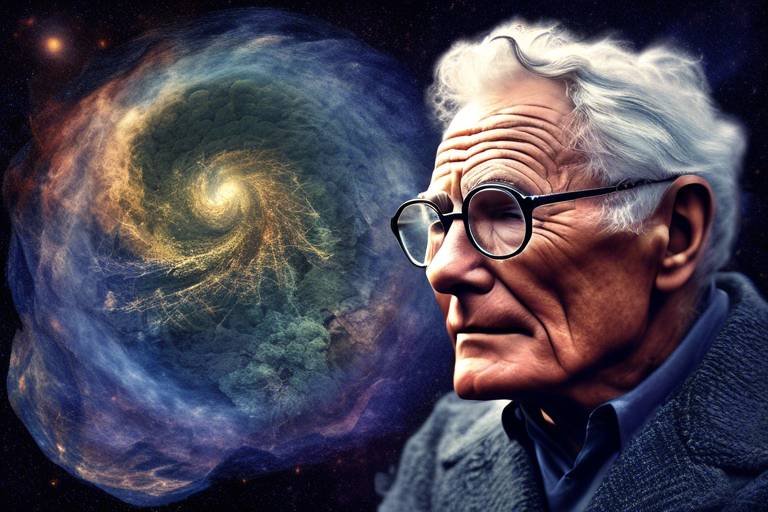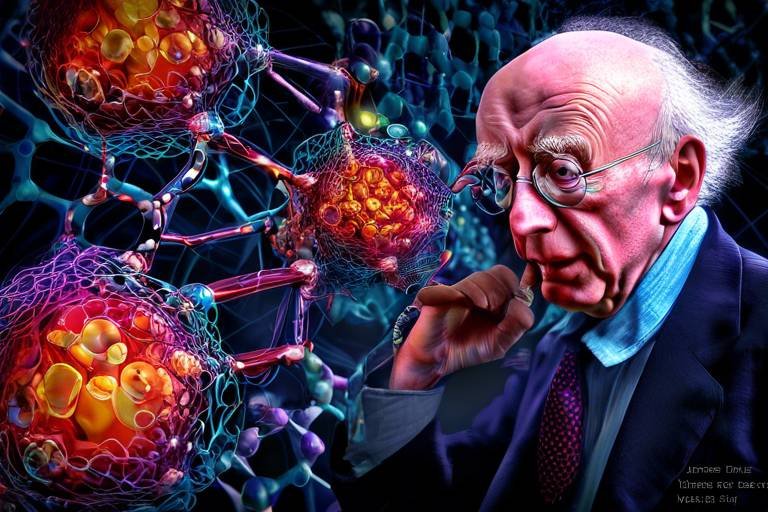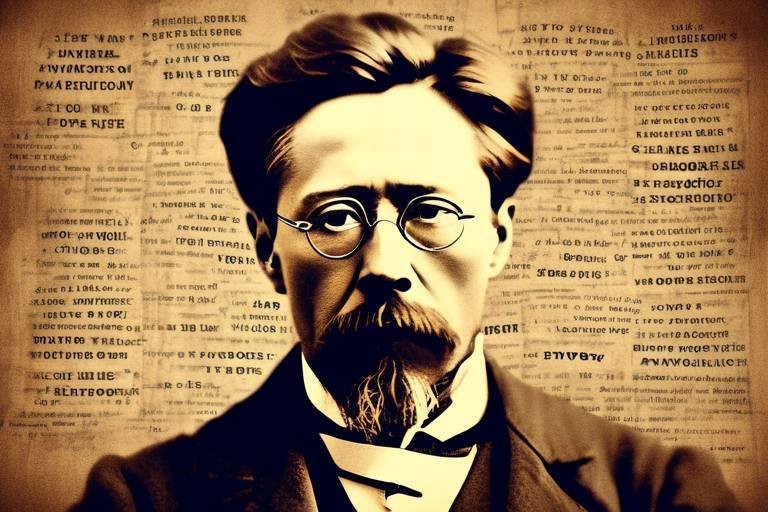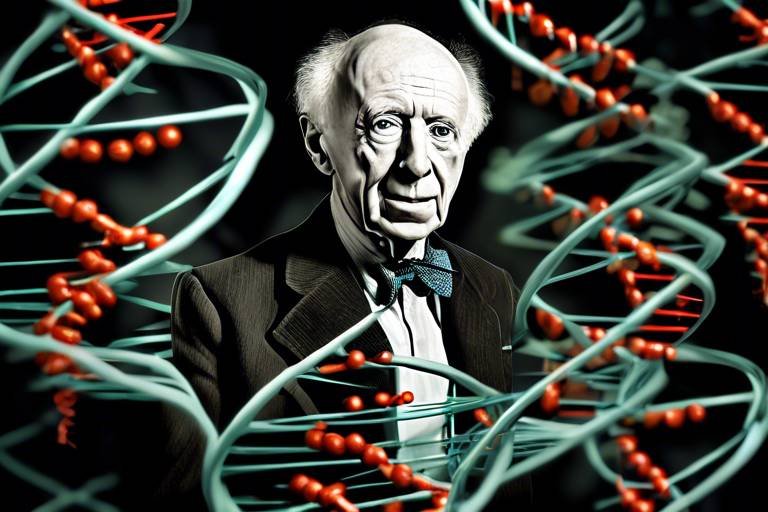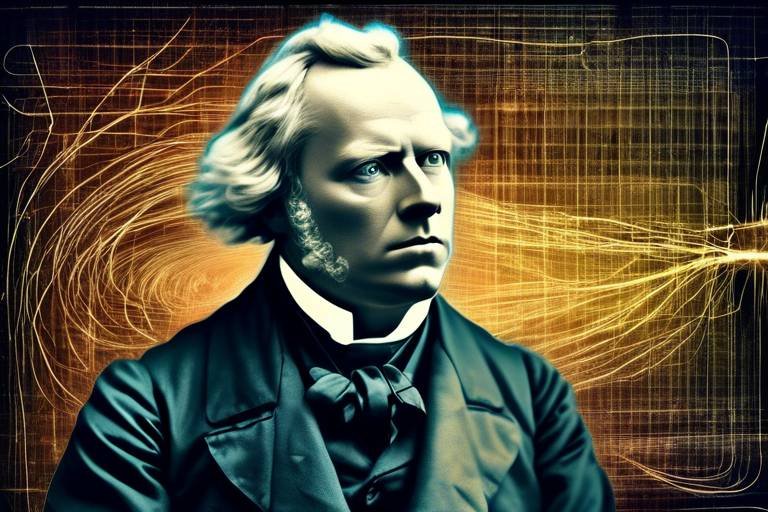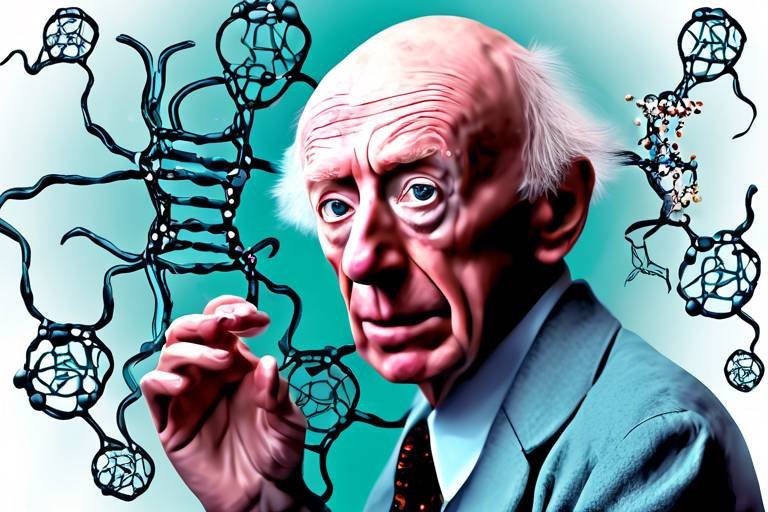The Discoveries of Louis Pasteur in Microbiology
Louis Pasteur, a name synonymous with groundbreaking advancements in microbiology, was a scientist whose work has shaped the very fabric of modern medicine and public health. Born in 1822 in Dole, France, Pasteur's insatiable curiosity and relentless pursuit of knowledge led him to explore the unseen world of microorganisms. His discoveries were not just academic; they were practical solutions to real-world problems that plagued humanity. Imagine a time when diseases ran rampant, and the causes were shrouded in mystery. Pasteur's work illuminated the dark corners of ignorance, revealing how tiny organisms could wreak havoc on health and well-being.
One of his most significant contributions was the formulation of the germ theory of disease. Before Pasteur, many believed that diseases were caused by miasmas or "bad air." However, through meticulous experimentation, he demonstrated that microorganisms were the real culprits behind infections. This revolutionary idea laid the groundwork for hygiene practices and sanitation methods that have saved countless lives. It was as if Pasteur handed humanity a powerful lens to see the invisible threats lurking in our environment, prompting a shift in how people approached cleanliness and health.
In addition to the germ theory, Pasteur's invention of pasteurization stands as a testament to his innovative spirit. This process, which involves heating food and beverages to kill harmful microorganisms, transformed food safety standards. Imagine the relief of knowing that a simple process could significantly reduce the risk of foodborne illnesses! Pasteurization not only improved the safety of milk and wine but also extended their shelf life, making food preservation more effective. The impact of this discovery rippled through the industry, leading to safer consumption practices that we often take for granted today.
To understand the significance of pasteurization, we must consider the historical context in which Pasteur was working. During the 19th century, outbreaks of diseases like cholera and typhoid fever were common, and people were desperate for solutions. Pasteur's research emerged as a beacon of hope, addressing the urgent need for effective methods to combat these health crises. His work in the dairy industry, for instance, helped eliminate diseases such as tuberculosis and brucellosis, ensuring that milk was not just a staple but a safe one.
Moreover, Pasteur's contributions extended beyond the dairy sector. His pioneering work on vaccination, particularly against rabies and anthrax, marked a monumental leap in preventive medicine. By understanding the principles of how vaccines induce immunity, Pasteur laid the foundation for modern immunology. His innovative techniques showcased the potential to combat infectious diseases before they could take hold, changing the narrative from reactive treatment to proactive prevention.
In summary, Louis Pasteur's discoveries in microbiology were not just scientific achievements; they were revolutionary ideas that transformed public health, food safety, and preventive medicine. His legacy is evident in the rigorous application of the scientific method he championed, which continues to guide researchers today. As we reflect on his contributions, we realize that Pasteur was not merely a scientist; he was a pioneer whose insights have saved millions of lives and continue to influence our understanding of health and disease.
- What is the germ theory of disease?
The germ theory of disease is the scientific theory that microorganisms are the cause of many diseases, fundamentally changing the way we understand infection and hygiene. - How did pasteurization improve food safety?
Pasteurization involves heating food and beverages to kill harmful microorganisms, significantly reducing the risk of foodborne illnesses. - What vaccines did Louis Pasteur develop?
Pasteur developed vaccines for rabies and anthrax, which were pivotal in the field of immunology and preventive medicine. - Why is Louis Pasteur considered a pioneer in microbiology?
Pasteur's rigorous scientific methods and groundbreaking discoveries laid the foundation for modern microbiology, influencing both public health and food safety practices.

The Germ Theory of Disease
Louis Pasteur's formulation of the germ theory of disease was nothing short of revolutionary. Before his groundbreaking work, the prevailing belief was that diseases were caused by imbalances in bodily fluids or by miasmas—noxious vapors arising from decaying organic matter. Pasteur challenged this notion through meticulous experimentation, demonstrating that microorganisms, or "germs," were the true culprits behind many infectious diseases. This shift in understanding not only transformed the field of microbiology but also laid the groundwork for modern medicine.
Imagine living in a time when the cause of illness was a complete mystery. People often attributed sickness to bad air or supernatural forces. Pasteur's research provided a light in the darkness, illuminating the connection between pathogens and disease. His experiments with fermentation and spoilage revealed that specific microorganisms were responsible for these processes, leading him to conclude that similar agents could cause diseases in humans and animals. This was a paradigm shift that would forever change how we approach health and hygiene.
One of Pasteur's most notable experiments involved the study of anthrax in sheep. He discovered that by exposing sheep to a weakened form of the anthrax bacterium, he could induce immunity in them. This was a pivotal moment that not only supported the germ theory but also paved the way for the development of vaccines. His findings prompted a wave of advancements in public health, as they provided a scientific basis for sanitation and hygiene practices that significantly reduced illness and mortality rates.
The implications of the germ theory were profound. It led to the establishment of essential practices such as:
- Handwashing to prevent the spread of germs
- Proper sanitation in hospitals and clinics
- Food safety regulations to control contamination
In summary, the germ theory of disease was a monumental breakthrough that reshaped our understanding of health and illness. Louis Pasteur's dedication to scientific inquiry and his innovative approach to experimentation provided the foundation for modern microbiology and public health. His legacy continues to influence how we combat infectious diseases today, reminding us of the importance of rigorous scientific research in improving human health.

Pasteurization Process
The is one of the most significant contributions made by Louis Pasteur to public health and food safety. This revolutionary technique involves heating food and beverages to a specific temperature for a set period, effectively killing harmful microorganisms without compromising the quality of the product. Imagine a world where your milk could carry deadly bacteria, or where fruit juices were a breeding ground for pathogens. Pasteur's method changed all that, making our daily consumables much safer.
Initially developed in the 1860s to address spoilage in wine, pasteurization has since evolved to encompass a wide range of products, including milk, juices, and canned foods. The process works through a simple yet effective principle: by applying heat, we can destroy not only the bacteria that cause spoilage but also those that lead to foodborne illnesses. This technique has become a cornerstone of modern food safety practices, ensuring that what we consume is not only delicious but also safe.
To illustrate the effectiveness of pasteurization, consider the following table that outlines the typical temperatures and times used for different products:
| Product | Temperature (°C) | Time (minutes) |
|---|---|---|
| Milk | 72 | 15 |
| Fruit Juices | 85 | 1 |
| Canned Foods | 121 | 3 |
As you can see, the temperatures and times vary depending on the product, reflecting the need for precision in the pasteurization process. This attention to detail is what makes pasteurization such an effective method for ensuring food safety.
Moreover, the impact of pasteurization extends beyond just food safety; it has profound implications for public health. By reducing the incidence of foodborne illnesses, pasteurization has contributed to a significant decline in disease outbreaks linked to contaminated food and beverages. This is particularly evident in the dairy industry, where pasteurization has been instrumental in preventing diseases like tuberculosis and brucellosis. The process not only protects consumers but also enhances the shelf life of products, allowing for longer storage and reduced waste.
In conclusion, the pasteurization process is a remarkable example of how scientific innovation can lead to practical solutions that enhance our quality of life. Louis Pasteur's legacy continues to resonate in our kitchens and dining tables, reminding us of the importance of food safety and hygiene. As we consume our favorite beverages and dairy products, we can thank Pasteur for the assurance that they are safe and healthy.
- What is pasteurization? Pasteurization is a heat treatment process that kills harmful microorganisms in food and beverages.
- Who invented pasteurization? Louis Pasteur invented pasteurization in the 1860s.
- Is pasteurized food safer? Yes, pasteurized food is generally safer as it reduces the risk of foodborne illnesses.
- What products are typically pasteurized? Commonly pasteurized products include milk, fruit juices, and canned foods.

Historical Context of Pasteurization
To truly appreciate the groundbreaking work of Louis Pasteur, it's essential to understand the historical context in which he operated. The 19th century was a time of significant upheaval in Europe, marked by rapid industrialization and urbanization. This era brought about tremendous changes in society, but it also led to a surge in public health crises. With people flocking to cities for work, the population density increased, and so did the spread of infectious diseases. Outbreaks of cholera, typhoid fever, and other illnesses were rampant, leaving communities desperate for solutions.
During Pasteur's time, the prevailing belief was that diseases were caused by miasmas, or "bad air." This theory, although widely accepted, was fundamentally flawed and contributed to the lack of effective public health measures. The scientific community was just beginning to explore the microscopic world, and the idea that tiny organisms could be responsible for disease was revolutionary. Pasteur's meticulous experiments challenged this notion, paving the way for the acceptance of the germ theory of disease.
Pasteur's work on fermentation and spoilage in the 1860s was instrumental in his discovery of pasteurization. He observed that certain microorganisms caused food and beverages to spoil, leading to his realization that these same organisms could also be responsible for disease. This insight was not just a scientific breakthrough; it was a societal necessity. The need for safe food and drink was paramount, especially in a rapidly industrializing world where food preservation was becoming increasingly important.
In response to the health challenges of his time, Pasteur developed the pasteurization process, which was initially aimed at preventing spoilage in wine and later expanded to milk and other perishable goods. This method involved heating liquids to a specific temperature to kill harmful microorganisms without compromising the quality of the product. The implications of this innovation were profound, as it not only improved food safety but also set a new standard for public health practices.
To further illustrate the significance of Pasteur's work, consider the following table that outlines some of the major health crises of the 19th century and the corresponding public health responses:
| Health Crisis | Year(s) | Public Health Response |
|---|---|---|
| Cholera Outbreak | 1832, 1849, 1854 | Quarantine measures, sanitation improvements |
| Typhoid Fever | Multiple outbreaks throughout the century | Improved water supply, waste management |
| Smallpox Epidemic | Various outbreaks | Vaccination initiatives |
As we delve deeper into Pasteur's contributions, it becomes clear that his work was not just about scientific discovery; it was about addressing the urgent health needs of a society in crisis. His innovations laid the foundation for modern food safety practices and public health standards, ultimately transforming how we view hygiene and disease prevention. Pasteur's legacy continues to resonate today, reminding us of the importance of science in safeguarding public health.
- What is pasteurization? Pasteurization is a process that involves heating food or beverages to a specific temperature to kill harmful microorganisms, thereby enhancing safety and extending shelf life.
- Why is Louis Pasteur considered a pioneer in microbiology? Pasteur's formulation of the germ theory and his development of pasteurization and vaccines established foundational principles in microbiology and public health.
- How did pasteurization impact the dairy industry? Pasteurization significantly reduced the risk of diseases transmitted through milk, such as tuberculosis, making dairy products safer for consumption and extending their shelf life.

Impact on Dairy Industry
The impact of Louis Pasteur's discoveries on the dairy industry is nothing short of revolutionary. Before the advent of pasteurization, milk was often a source of numerous diseases, including tuberculosis and brucellosis, posing significant health risks to consumers. Imagine a time when a simple glass of milk could lead to serious illness—it's a frightening thought! Pasteur's innovative process for heating milk to kill harmful microorganisms changed all that, transforming the dairy landscape into a safer environment for consumers.
By implementing pasteurization, dairy producers could ensure that their products were not only safe but also had a longer shelf life. This was a game-changer for the industry, allowing for the distribution of milk over greater distances without the fear of spoilage or disease. The process involves heating milk to a specific temperature for a set period, effectively reducing the microbial load while preserving the nutritional content. The result? A product that is both safe and delicious!
Furthermore, the introduction of pasteurization led to a shift in consumer perception. People began to trust dairy products more than ever before, knowing that the risk of contracting diseases from milk was significantly minimized. This newfound confidence in dairy consumption contributed to increased sales and a boom in the dairy industry. To illustrate the impact of pasteurization on public health in the dairy sector, consider the following statistics:
| Disease | Before Pasteurization | After Pasteurization |
|---|---|---|
| Tuberculosis | High incidence in dairy consumers | Significantly reduced cases |
| Brucellosis | Common in unpasteurized milk | Rare in pasteurized milk |
Moreover, pasteurization has not only improved safety but has also paved the way for innovative dairy products. With the assurance of safety, manufacturers have been able to explore various dairy derivatives, such as cheese and yogurt, with confidence. The ability to produce these products safely has led to an explosion of variety in the dairy market, catering to diverse consumer tastes and preferences.
In summary, Louis Pasteur's contributions to the dairy industry through his pasteurization process have had lasting effects. They not only made milk safer to drink but also transformed public health standards and consumer habits. Today, when you enjoy a glass of milk or a creamy yogurt, you can thank Pasteur for the peace of mind that comes with knowing these products are safe and nutritious.
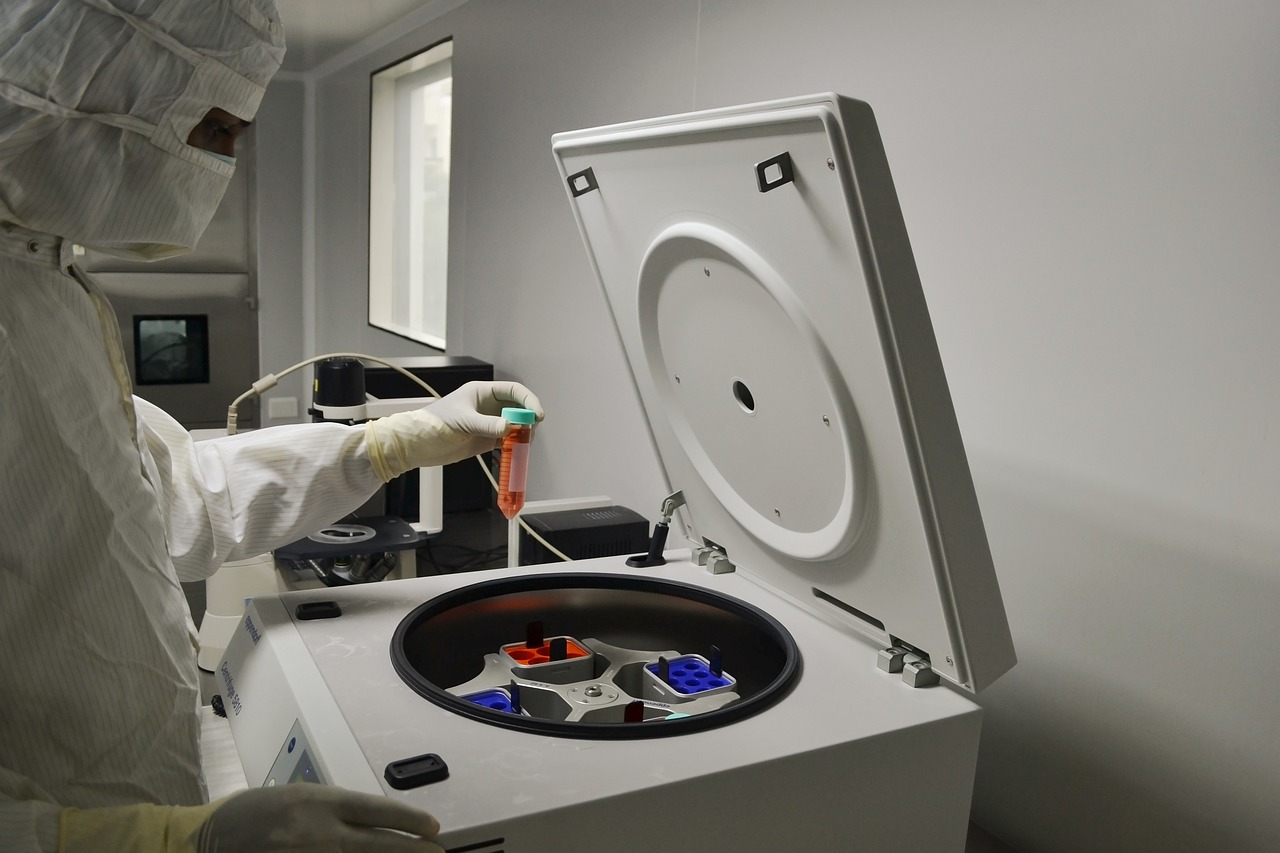
Global Food Safety Standards
The introduction of pasteurization by Louis Pasteur not only revolutionized food safety but also laid the groundwork for the establishment of . Before Pasteur's time, foodborne illnesses were rampant, and the connection between microorganisms and disease was largely misunderstood. His pioneering work highlighted the critical need for stringent safety measures in food processing and storage, which ultimately influenced regulations worldwide.
As countries began to recognize the importance of food safety, they adopted various guidelines and regulations inspired by Pasteur's findings. These standards were aimed at minimizing the risk of contamination and ensuring that food products were safe for consumption. The impact of pasteurization can be seen in several key areas:
- Reduction of Foodborne Illnesses: By eliminating harmful bacteria in food and beverages, pasteurization significantly decreased the incidence of diseases such as salmonella, listeria, and E. coli.
- Standardization of Food Processing: Pasteur's methods encouraged the development of standardized processing techniques, ensuring that food products met safety criteria before reaching consumers.
- Consumer Confidence: The implementation of safety standards has helped build trust between consumers and food producers, reassuring the public that the food they consume is safe.
Today, global food safety standards are shaped by organizations such as the World Health Organization (WHO) and the Food and Agriculture Organization (FAO). These agencies work together to establish guidelines that member countries can adopt, ensuring a consistent approach to food safety. The principles of pasteurization are now integrated into these standards, emphasizing the importance of controlling microbial hazards in food production.
Moreover, with the advent of modern technology, food safety standards have evolved even further. Advanced techniques such as HACCP (Hazard Analysis and Critical Control Points) and ISO 22000 have emerged, focusing on risk management and comprehensive food safety systems. These frameworks not only rely on pasteurization but also incorporate a variety of practices to ensure food safety from farm to table.
In summary, the legacy of Louis Pasteur extends far beyond his laboratory experiments; it has fundamentally shaped the way we approach food safety today. The global standards that arose from his work continue to protect consumers and promote public health, demonstrating the profound impact of his discoveries on our daily lives.
- What is pasteurization? Pasteurization is a process that heats food and beverages to a specific temperature for a set period, killing harmful microorganisms without compromising the quality of the product.
- How has pasteurization influenced modern food safety? Pasteurization has paved the way for global food safety standards by demonstrating the need for scientific methods to eliminate pathogens in food.
- Are all food products pasteurized? No, not all food products undergo pasteurization. However, many dairy products, juices, and canned foods are commonly pasteurized to ensure safety.
- What role do organizations like WHO and FAO play in food safety? These organizations establish guidelines and standards that countries can adopt to ensure consistent food safety practices worldwide.

Scientific Method and Experimentation
Louis Pasteur, often hailed as the father of microbiology, was not just a brilliant scientist; he was a master of the scientific method. His approach to experimentation was meticulous, systematic, and groundbreaking. At a time when many scientific inquiries were based on speculation and anecdotal evidence, Pasteur's commitment to rigorous experimentation set a new standard. He believed that to understand the world around us, one must engage in a process of observation, hypothesis formulation, experimentation, and conclusion. This method not only enhanced the credibility of his findings but also paved the way for future scientists to adopt similar practices.
One of Pasteur's most notable experiments involved the study of fermentation. He sought to understand why certain beverages spoiled while others remained safe for consumption. By isolating microorganisms and observing their effects, he was able to demonstrate that specific microbes were responsible for fermentation and spoilage. This was a pivotal moment in microbiology, as it emphasized the need for controlled experiments to draw reliable conclusions. His work led to the realization that microorganisms could be both beneficial and harmful, depending on their context.
Furthermore, Pasteur's experiments were characterized by their innovative use of hypothesis testing. He would often propose a theory and then devise experiments to test its validity. For instance, his famous swan-neck flask experiment was designed to disprove the theory of spontaneous generation, which posited that life could arise from non-living matter. By creating a flask that allowed air to enter but prevented microbial contamination, he effectively demonstrated that microorganisms were present in the air and responsible for contamination. This experiment not only debunked a long-standing myth but also showcased the power of the scientific method in uncovering the truth.
In addition to his experiments, Pasteur's ability to communicate his findings was remarkable. He understood that science is not just about conducting experiments; it's also about sharing knowledge. He published numerous papers and gave lectures that disseminated his discoveries to the scientific community and the public. This aspect of his work is crucial because it highlights that the impact of scientific research extends beyond the laboratory. By engaging with the community, Pasteur inspired a new generation of scientists to embrace the scientific method in their own research.
Ultimately, Pasteur's legacy in the realm of scientific experimentation is profound. His insistence on evidence-based conclusions and his innovative techniques laid the groundwork for modern microbiology and established a framework that scientists continue to use today. The principles he championed are not just historical footnotes; they are the very essence of scientific inquiry. As we look back on his contributions, we realize that Pasteur didn't just change the way we understand microbes; he changed the way we approach science itself.
- What was Louis Pasteur's main contribution to microbiology?
Pasteur's main contribution was the formulation of the germ theory of disease, which established that specific microorganisms cause specific diseases. - How did Pasteur's experiments change public health?
His experiments led to the development of pasteurization, significantly improving food safety and reducing the incidence of foodborne illnesses. - What is the significance of the scientific method in Pasteur's work?
The scientific method allowed Pasteur to conduct controlled experiments, leading to reliable conclusions that transformed our understanding of microbiology. - What vaccines did Pasteur develop?
Pasteur developed vaccines for rabies and anthrax, marking significant advancements in preventive medicine.

Vaccination Development
Louis Pasteur's groundbreaking work in the field of vaccination has transformed the landscape of preventive medicine. His innovative techniques and relentless pursuit of knowledge led to the development of vaccines that not only saved countless lives but also laid the groundwork for modern immunology. One of his most notable achievements was the creation of the rabies vaccine, which emerged from his meticulous studies on how infectious agents operate. Imagine a world where rabies, a once-deadly disease, could be effectively combated; Pasteur made that a reality!
Pasteur's approach to vaccination was revolutionary. He believed that by exposing the body to a weakened or inactivated form of a pathogen, the immune system could be trained to recognize and fight off the actual disease if encountered later. This concept was a game-changer, shifting the focus from merely treating diseases to preventing them altogether. In essence, he was teaching the body to be its own defender, much like a coach training athletes to perform at their best during a crucial game.
To illustrate the principles behind Pasteur's vaccination techniques, consider the following key elements:
- Attenuation: Pasteur discovered that weakening the pathogen could stimulate an immune response without causing the disease itself.
- Inoculation: This process involved introducing the weakened pathogen into the body, allowing the immune system to prepare for future encounters.
- Immunity Development: After inoculation, the body would produce antibodies, creating a defense mechanism against the actual disease.
His work with anthrax further exemplified the profound impact of his research. By developing a vaccine for anthrax, Pasteur effectively demonstrated how vaccination could control outbreaks of infectious diseases, particularly in livestock. This not only improved animal health but also had significant implications for the agricultural economy, showcasing the interconnectedness of public health and economic stability.
Today, Pasteur's legacy in vaccination continues to resonate. His pioneering methods have paved the way for the development of numerous vaccines that protect against various infectious diseases, including measles, polio, and influenza. Thanks to his contributions, immunization programs have become a cornerstone of public health initiatives worldwide, leading to the eradication of diseases that once claimed countless lives.
In summary, Louis Pasteur's contributions to vaccination development are nothing short of monumental. His innovative techniques and principles have not only shaped the field of immunology but have also saved millions of lives. As we navigate through modern challenges in public health, we can look back at Pasteur's work as a beacon of hope and a reminder of the power of scientific inquiry.
Q: What diseases did Pasteur develop vaccines for?
A: Pasteur developed vaccines primarily for rabies and anthrax, which were significant health threats during his time.
Q: How did Pasteur's work influence modern vaccination practices?
A: His principles of attenuation and inoculation laid the foundation for the development of many vaccines used today, emphasizing the importance of preventing diseases rather than just treating them.
Q: Why is Pasteur considered a pioneer in microbiology?
A: Pasteur's rigorous scientific methods and discoveries in germ theory and vaccination significantly advanced our understanding of infectious diseases, making him a key figure in the field of microbiology.

Principles of Vaccination
The principles of vaccination are rooted in the concept of stimulating the immune system to recognize and combat specific pathogens. Louis Pasteur, a pioneer in this field, understood that introducing a harmless form of a disease-causing microorganism could prepare the body's defenses for a future encounter with the actual pathogen. This groundbreaking idea laid the foundation for modern immunology and has saved countless lives.
At the core of vaccination is the principle of immunization. When a vaccine is administered, it typically contains weakened or inactivated parts of a particular microorganism, or even a piece of its genetic material. This exposure prompts the immune system to generate a response, creating memory cells that "remember" the pathogen. Thus, if the body encounters the real pathogen later, it can mount a swift and effective defense. This process can be likened to a fire drill; just as practicing for a fire prepares individuals to respond quickly in an emergency, vaccination trains the immune system to respond efficiently to real threats.
Pasteur's work with vaccines, particularly for rabies and anthrax, demonstrated several key principles:
- Specificity: Vaccines are designed to target specific pathogens, ensuring that the immune response is tailored to the exact threat.
- Memory: Once the immune system has been exposed to the vaccine, it retains a memory of the pathogen for years, often a lifetime, allowing for rapid response upon re-exposure.
- Herd Immunity: Widespread vaccination protects not only individuals who are vaccinated but also those who cannot be vaccinated, such as infants or immunocompromised individuals, by reducing the overall prevalence of the disease in the community.
Furthermore, Pasteur's innovative approach included the use of attenuated (weakened) strains of pathogens, which would not cause disease but would still elicit a strong immune response. This method was revolutionary because it paved the way for the development of vaccines that are both safe and effective. The success of these vaccines has led to the eradication or control of several diseases that once posed significant public health threats.
Today, the principles established by Pasteur continue to guide vaccine development. Scientists are constantly researching new ways to enhance vaccine efficacy and safety, utilizing advanced technologies such as recombinant DNA and mRNA platforms. These innovations have opened the door to vaccines that can be produced more quickly and tailored to emerging infectious diseases, such as COVID-19.
In conclusion, the principles of vaccination, as laid out by Louis Pasteur, have not only transformed the field of medicine but have also played a crucial role in shaping public health policies worldwide. The ongoing commitment to vaccination remains essential in the fight against infectious diseases, ensuring that future generations can live healthier lives, free from the threat of preventable illnesses.
1. What is the purpose of vaccination?
Vaccination aims to prepare the immune system to fight off specific pathogens, reducing the risk of disease and promoting overall public health.
2. How do vaccines work?
Vaccines introduce a harmless form of a pathogen to the body, prompting an immune response that creates memory cells. If the body encounters the actual pathogen later, it can respond more effectively.
3. Are vaccines safe?
Yes, vaccines undergo rigorous testing for safety and efficacy before approval. Side effects are generally mild and temporary compared to the risks of the diseases they prevent.
4. What is herd immunity?
Herd immunity occurs when a significant portion of a population is vaccinated, reducing the overall spread of a disease and protecting those who cannot be vaccinated.

Legacy in Public Health
The legacy of Louis Pasteur in public health is nothing short of monumental. His groundbreaking discoveries not only revolutionized the field of microbiology but also laid the foundation for modern public health practices. Imagine a world where infectious diseases ran rampant, unchecked by any scientific understanding. Pasteur changed that narrative, providing the tools and theories necessary to combat these threats. His work in vaccination and germ theory has saved countless lives and continues to influence health policies around the globe.
One of the most significant aspects of Pasteur's legacy is the establishment of vaccination programs that have become standard practice in public health. His development of the rabies and anthrax vaccines marked the beginning of a new era in preventive medicine. These innovations not only protected individuals from deadly diseases but also contributed to the broader concept of herd immunity, where widespread vaccination can protect those who cannot be vaccinated, such as infants or immunocompromised individuals. This principle is now a cornerstone of public health strategies worldwide.
Furthermore, Pasteur's emphasis on the scientific method has left an indelible mark on research practices. His rigorous approach to experimentation encouraged future scientists to adopt similar methodologies, fostering a culture of evidence-based research. This shift has been crucial in developing new vaccines and treatments for various diseases, ensuring that public health decisions are grounded in solid scientific evidence.
To illustrate the impact of Pasteur's work, consider the following table that outlines some key milestones in vaccination and their effects on public health:
| Year | Vaccine Developed | Impact on Public Health |
|---|---|---|
| 1885 | Rabies Vaccine | Significantly reduced rabies cases and fatalities. |
| 1881 | Anthrax Vaccine | Decreased anthrax outbreaks in livestock, protecting both animals and humans. |
| 20th Century | Multiple Vaccines (e.g., Polio, Measles) | Eradicated or controlled several infectious diseases, leading to increased life expectancy. |
In addition to his contributions to vaccination and the scientific method, Pasteur's work has had a profound influence on global health policies. His germ theory paved the way for improved sanitation and hygiene practices. Public health campaigns focusing on cleanliness and disease prevention, inspired by Pasteur's findings, have dramatically reduced the incidence of infectious diseases. For instance, the implementation of handwashing protocols in hospitals and the promotion of safe food handling practices can be traced back to the principles established by Pasteur.
Today, we continue to see the fruits of Pasteur's labor in the fight against diseases. Vaccination campaigns against diseases such as measles, polio, and influenza are essential components of public health strategies. Furthermore, the ongoing research into new vaccines and treatments reflects the enduring impact of Pasteur's legacy. His vision of a world where science and medicine work together to protect human health remains a guiding principle for public health professionals.
In conclusion, the legacy of Louis Pasteur in public health is profound and far-reaching. His innovations have not only saved lives but have also shaped the way we approach health and disease prevention today. As we continue to navigate the complexities of public health challenges, the principles established by Pasteur will undoubtedly guide us in our efforts to create a healthier world.
- What is the germ theory of disease? The germ theory of disease states that many diseases are caused by microorganisms. This theory was pivotal in understanding how infections spread and how they can be prevented.
- How did Pasteur contribute to vaccination? Pasteur developed the first vaccines for rabies and anthrax, demonstrating that exposure to a weakened form of a pathogen could induce immunity.
- What is pasteurization, and why is it important? Pasteurization is a process of heating food and beverages to eliminate harmful microorganisms, significantly improving food safety and public health.
- How has Pasteur's work influenced modern medicine? Pasteur's emphasis on the scientific method and his discoveries in microbiology and vaccination have laid the groundwork for contemporary medical practices and public health policies.
Frequently Asked Questions
- What is the germ theory of disease?
The germ theory of disease, formulated by Louis Pasteur, posits that many diseases are caused by microorganisms. This revolutionary idea shifted the focus of medicine and public health towards understanding and controlling these tiny invaders, leading to better hygiene practices and significantly reducing illness rates.
- How did Pasteurization change food safety?
Pasteurization is a process developed by Louis Pasteur to heat food and beverages to a specific temperature to kill harmful microorganisms. This method has drastically improved food safety standards, making products like milk safer for consumption and extending their shelf life.
- What impact did Pasteurization have on the dairy industry?
The dairy industry saw a significant transformation due to pasteurization. By preventing diseases such as tuberculosis and brucellosis, it ensured safer milk consumption for the public and helped maintain the quality and longevity of dairy products.
- What was the historical context behind Pasteur's discoveries?
During Pasteur's time, infectious diseases were rampant, and there was a pressing need for effective solutions. His groundbreaking experiments and discoveries emerged as responses to the health crises of the 19th century, ultimately leading to the establishment of modern microbiology.
- How did Pasteur contribute to vaccination development?
Louis Pasteur was a pioneer in vaccination, notably developing vaccines for rabies and anthrax. His innovative techniques for inducing immunity laid the groundwork for modern immunology and preventive medicine, saving countless lives worldwide.
- What are the principles behind Pasteur's vaccination techniques?
Pasteur's vaccination techniques involved exposing the body to weakened or inactivated pathogens, which stimulated the immune system to build defenses. This approach was groundbreaking and set the stage for the development of many vaccines we use today.
- What is Pasteur's legacy in public health?
The legacy of Louis Pasteur in public health is monumental. His discoveries in microbiology and vaccination have led to the eradication and control of various infectious diseases, shaping health policies and practices globally.



